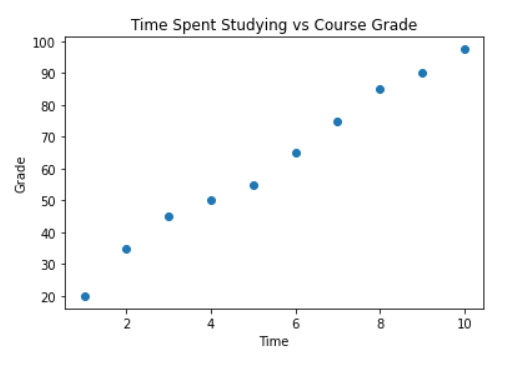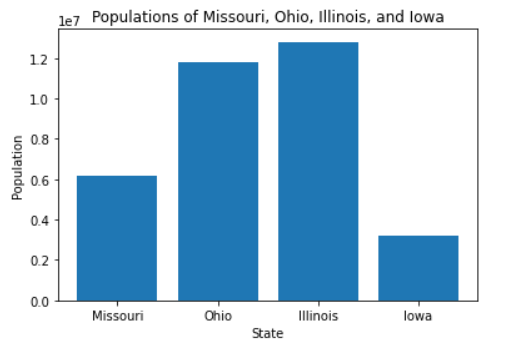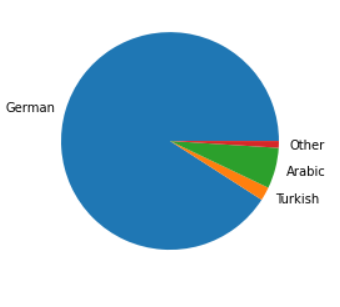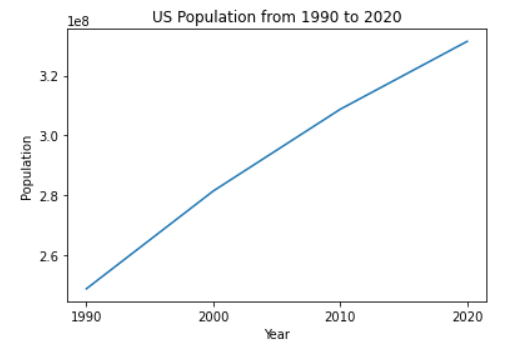Creating Simple Data Visualizations in Python using matplotlib
As data scientists, our job is to use data in order to solve problems. Data Visualization helps us make visual sense of the data that is hidden behind cluttered spreadsheets.
Scatter Plot
Scatter plots are used to represent the relationship between two variables. Below, we will observe how a scatter plot is used to show the relationship between time spent studying and the resulting course grade.

Bar Chart
Bar charts are used for representing a quantity or quantities with a bar. Below, we will observe how a bar chart is used to show the population of Missouri, Ohio, Illinois, and Iowa.

Pie Chart
Pie charts are used for representing proportions. Below, we will observe how a pie chart is used to show the different languages spoken in Germany.

Line Chart
Line charts are used for representing how a variable changes across a period. Below, we will observe how a line chart is used to show how the population of the US changed from the years 1990 to 2020.
